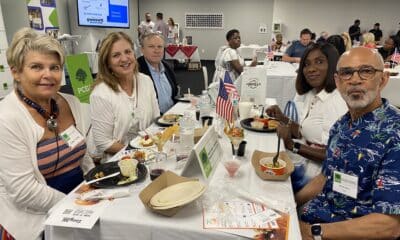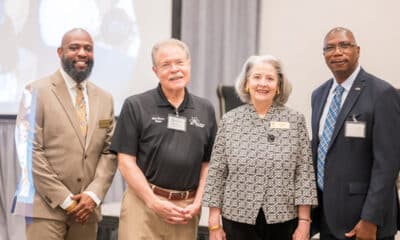Arts & Literature
Chillin’ in Peachtree Corners- PTC Photography Club Gallery
Published
2 years agoon
Even in the long, hot days of summer, chilling in Peachtree Corners is a breeze. Kids dance
in the refreshing fountain at Town Center, get “snow-bubbled” at the annual festival,
feed the geese in the Chattahoochee or laze in a swimming pool. Adults enjoy outdoor recreational activities, concerts and social time, and succumb to the occasional afternoon nap. Pets find ways to chill out too, in water and shady spots, and love extra time with their humans.
Enjoy these photos of the lazy, hazy days of summer from members of the Peachtree Corners Photography Club. The monthly meetings of the Club are open to everyone, from beginners to pros. For more information about the Club, go to their website at pcphotoclub.org.



Left photo: Alfonso Caycedo, Chilling by the river. Top right then bottom right: Anna Niziol, Volunteers; Eric Richter, Fun Flying the Drone.






Left side, top down: Anna Niziol, Pickleball.; Elaine Bullard, Foam Kids; Richard Phillips, Practicing Robotic Surgery at the Intuitive Robotics Mobile Van. Right side, top down: Richard Phillips, Peachtree Corners Festival; Tracey Rice, Lifeguard at River Station Pool; Vipul Singh, Wave your hands in the air.






Left down: Tracey Rice, Cooling off at Town Center; Tracey Rice, Weekend Break. Bottom: Alfonso Caycedo, Reading by the river shore. Right down: Elaine Bullard, Foam at Peachtree Corners Festival; Jim Worthington; Eric Richter, Watching Youth Baseball





Left down: Vipul Singh, On daddy’s shoulder; Eric Richter, Shopping the Festival Booths. Right Down: Anna Niziol, Tai Chi; Tracey Rice, Napping; Richard Phillips, Car Shows Main Attraction
Related
Around Atlanta
City Springs Theatre Company Presents the Hit Musical Jersey Boys
Published
3 weeks agoon
July 3, 2024
The megahit musical Jersey Boys makes its regional premiere in City Springs Theatre Company’s (CSTC) first-ever, five-week run at the Byers Theatre in Sandy Springs.
Directed by Atlanta’s-own Shane DeLancey, and choreographed by Meg Gillentine, Jersey Boys tells the rags-to-riches story of Frankie Valli and The Four Seasons. The show details their remarkable journey from the streets to the top of the charts, to their 1990 induction into the Rock and Roll Hall of Fame.
Leading the cast of Jersey Boys is Haden Rider as Frankie Valli. Rider is a City Springs Theatre Company veteran, with recent roles in both Legally Blonde (Emmett) and Fiddler on the Roof (Perchik).

Presented by Resurgens Spine Center, Jersey Boys runs from July 12 through August 11, and shines a special spotlight on home-grown talent, as the show’s four leading men are all Atlanta-area residents.
With phenomenal music, memorable characters and great storytelling, Jersey Boys follows the fascinating evolution of four blue-collar kids who became one of the greatest successes in pop-music history.
“City Springs Theatre Company is very proud to be the first in the southeast region to present Jersey Boys,” said CSTC Artistic Director and Tony Award-winner Shuler Hensley. “Our audiences have been asking for this particular show since we opened. The production is truly stacked with talent onstage and off, and we’re pulling out all the stops to bring audiences an experience that will rival any previous version of the show.”
Jersey Boys premiered at the La Jolla Playhouse in 2005, prior to its 13-year Broadway run, from 2005 to 2017. There have been productions of the show in Las Vegas, UK/Ireland, Toronto, Melbourne, Singapore, South Africa, the Netherlands, Japan, Dubai and China.
Jersey Boys features a book by Marshall Brickman and Rick Elice, with music by Bob Gaudio, and lyrics by Bob Crewe.
Individual tickets to see Jersey Boys are on sale now ($42 – $108), with discounts for seniors, students, groups and active and retired military personnel.
CSTC’s Box Office is open Monday through Friday from 10:00 a.m. – 5:00 p.m.
Call 404-477-4365 or visit CitySpringsTheatre.com for more information.
This production contains adult language and is recommended for mature audiences.
Performance schedule:
Friday, July 12 | 8:00 p.m.
Saturday, July 13 | 2:00 p.m. & 8:00 p.m.
Sunday, July 14 | 2:00 p.m. & 7:30 p.m.
Tuesday, July 16 | 7:30 p.m.
Wednesday, July 17 | 7:30 p.m.
Thursday, July 18 | 8:00 p.m.
Friday, July 19 | 8:00 p.m.
Saturday, July 20 | 2:00 p.m. & 8:00 p.m.
Sunday, July 21 | 2:00 p.m. & 7:30 p.m.
Tuesday, July 23 | 7:30 p.m.
Wednesday, July 24 | 7:30 p.m.
Thursday, July 25 | 8:00 p.m.
Friday, July 26 | 8:00 p.m.
Saturday, July 27 | 2:00 p.m. & 8:00 p.m.
Sunday, July 28 | 2:00 p.m. & 7:30 p.m.
Tuesday, July 30 | 7:30 p.m.
Wednesday, July 31 | 7:30 p.m.
Thursday, August 1 | 8:00 p.m.
Friday, August 2 | 8:00 p.m.
Saturday, August 3 | 2:00 p.m. & 8:00 p.m.
Sunday, August 4 | 2:00 p.m. & 7:30 p.m.
Tuesday, August 6 | 7:30 p.m.
Wednesday, August 7 | 7:30 p.m.
Thursday, August 8 | 8:00 p.m.
Friday, August 9 | 8:00 p.m.
Saturday, August 10 | 2:00 p.m. & 8:00 p.m.
Sunday, August 11 | 2:00 p.m. & 7:30 p.m.
Related
Arts & Literature
Local Students Show Off Their Artistic Creations
Published
2 months agoon
June 2, 2024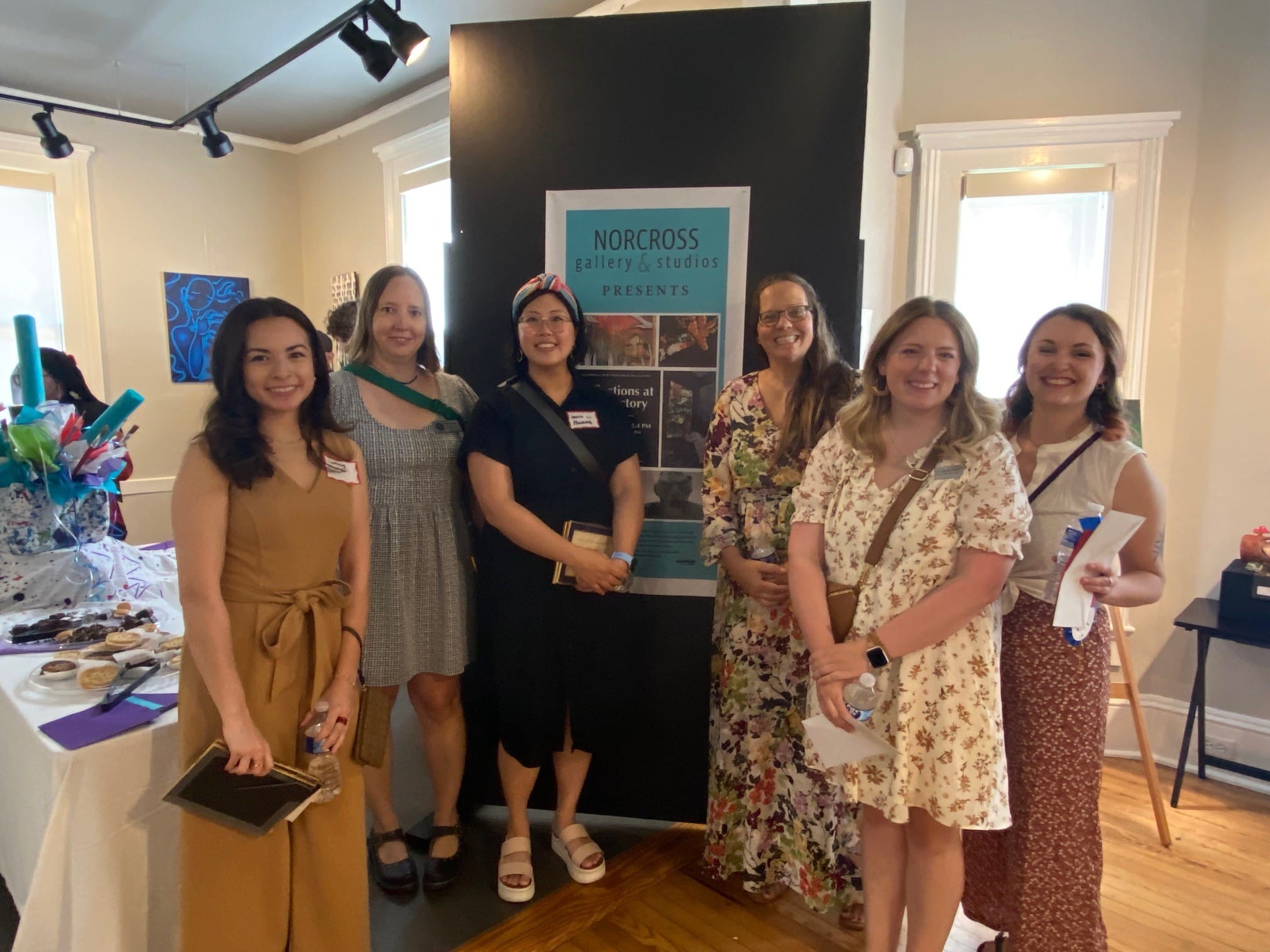
From May 11 through May 18, the Norcross Gallery & Studios kicked off a fantastic exhibition, Reflections at Rectory, which showcased the works of 36 rising stars: AP and IB art students from our local high schools.
The opening reception celebrated their creativity and dedication. Gallery director Anne Hall presented a dozen awards generously sponsored by the community, a testament to the local support for these young artists.
One prestigious award, the Terri Enfield Memorial Award, holds special significance.
Established by Terri’s daughters, it recognizes not just artistic excellence, but also leadership, work ethic and the spirit of collaboration. Last year’s winner, Aidan Ventimiglia, even played a part in selecting this year’s recipient Jasmine Rodriguez.
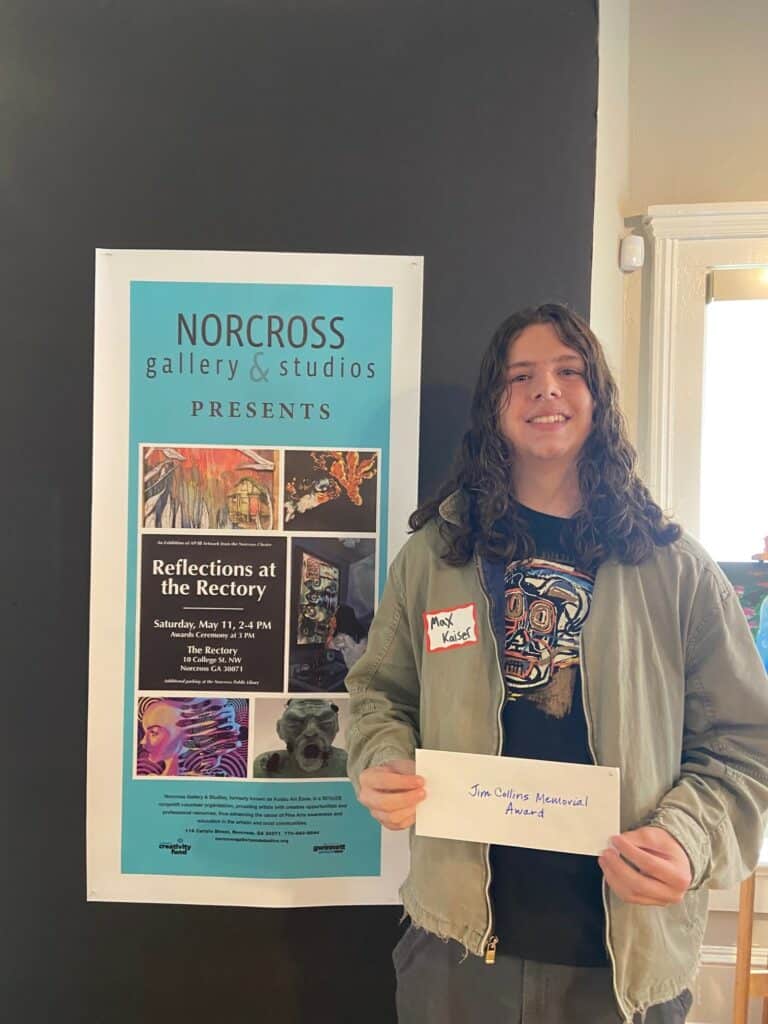
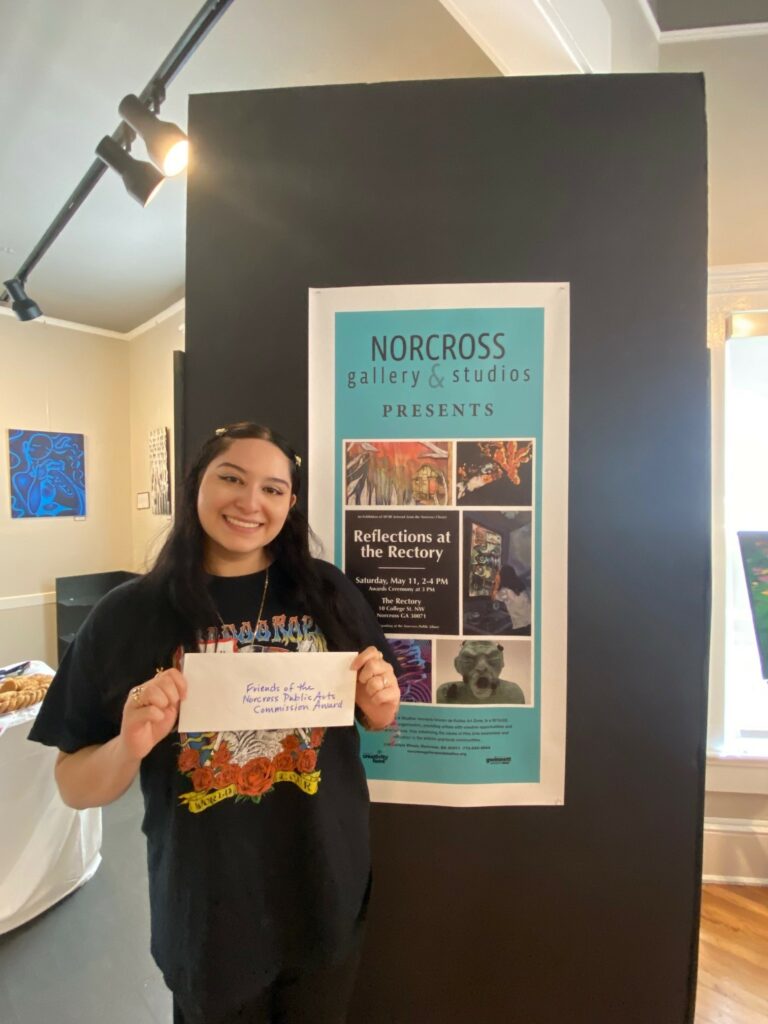
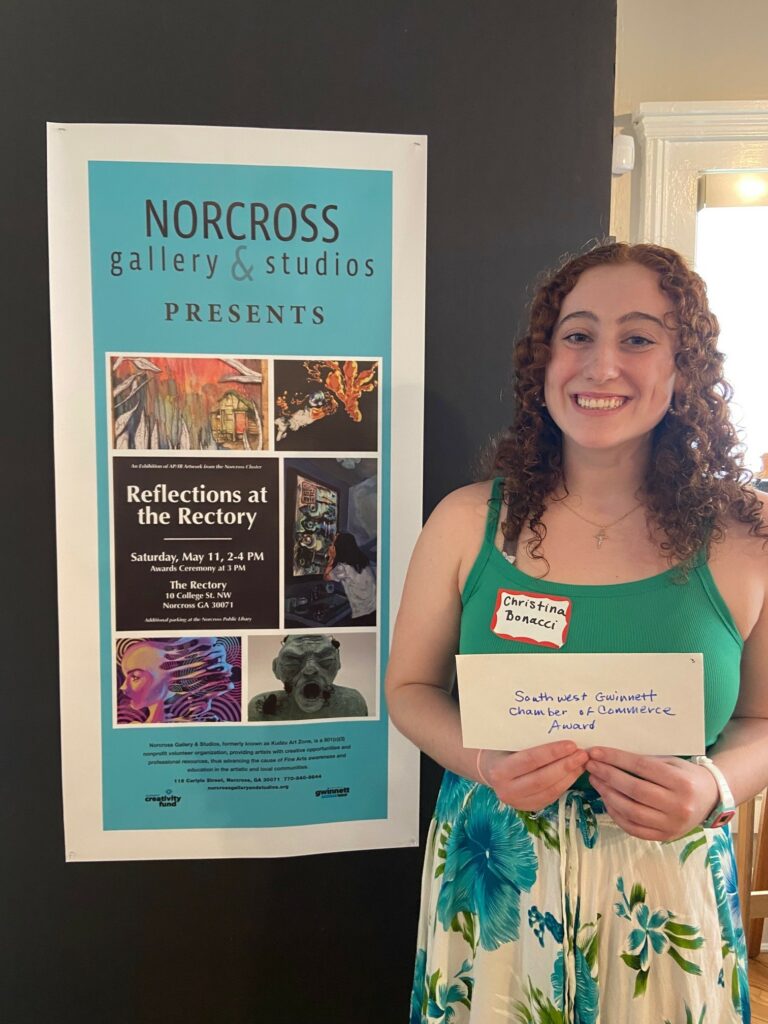
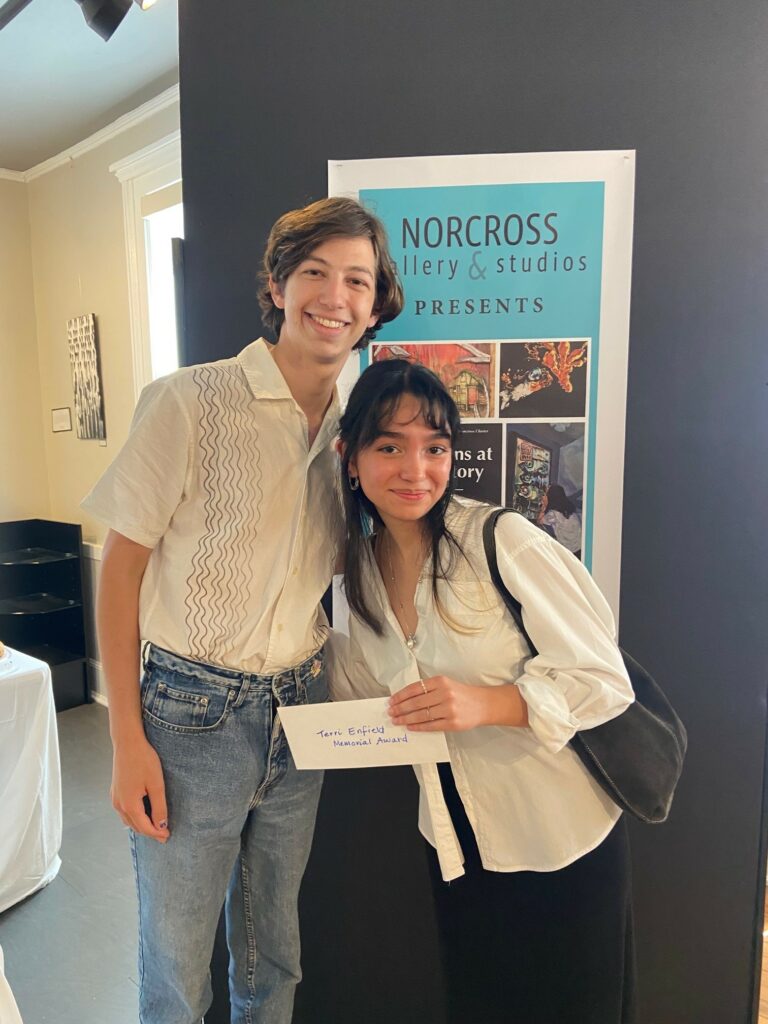
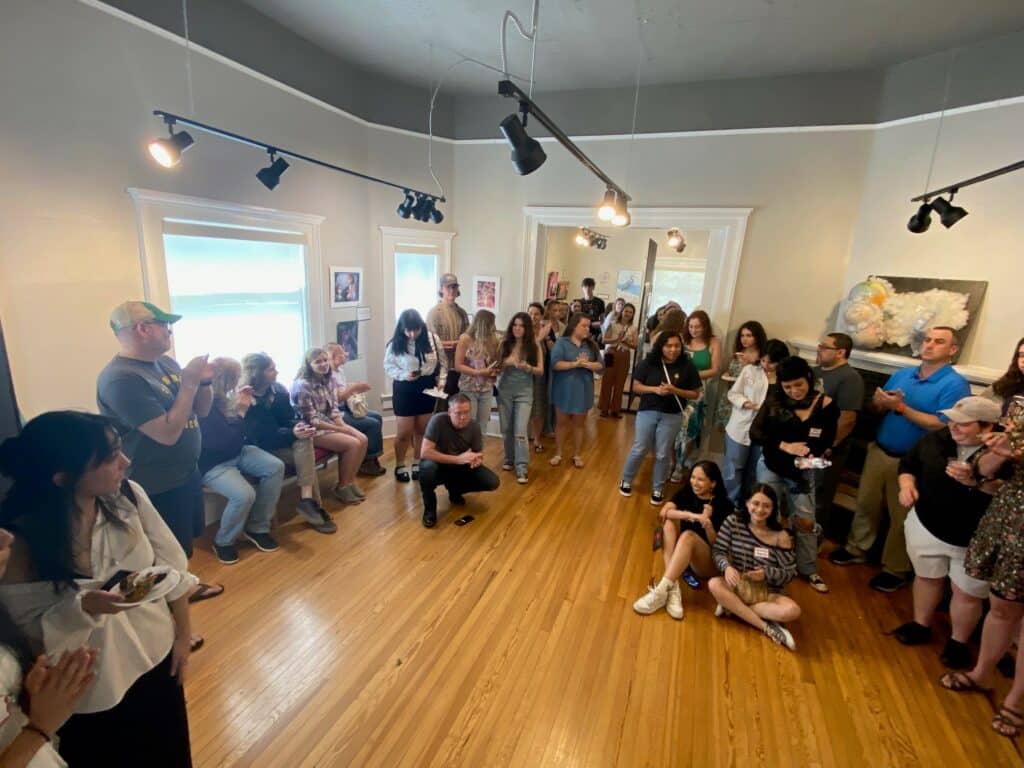
Congratulations to all the student artists.
Students in the second annual Reflections at the Rectory exhibit
Norcross High School:
- Gustavo Benumea-Sanchez
- Maycol Cruz Padilla
- Dorie Liu
- Harlet Martinez Castro
- Paulina Santana
- Gisela Rojas Medina
- Clare Fass
- Ava Netherton
- Ubaldo Diaz
- Katia Navas-Juarez
- Mariah Ingram
- Arisdelcy Juan
- Max Kaiser
- Dani Olaechea
- Christina Bonacci
- Diana Ortiz Ventura
- Katie Yerbabuena-Padierna
Paul Duke High School:
- Adamu Abdul-Latif
- Salma Noor Alabdouni
- Samrin Zaman
- Camryn Vinson
- Liz Damian
- Cecelia Berenguer
- Jasmine Rodriguez
- Angelina Bae
- Dahyana Perez
- Jonah Swerdlow
- Kyra Allicock
- Anni Brown
- Kaleb Fields
- Destiny Jones
- Gabriela Leal-Argueta
- Madisyn Mathis
- Ashley McDonough
- Ahtziri Pinones
- Alondra Valiente-Torres
Related
Arts & Literature
Book, TV and Podcast Recommendations for this Summer
Published
2 months agoon
June 2, 2024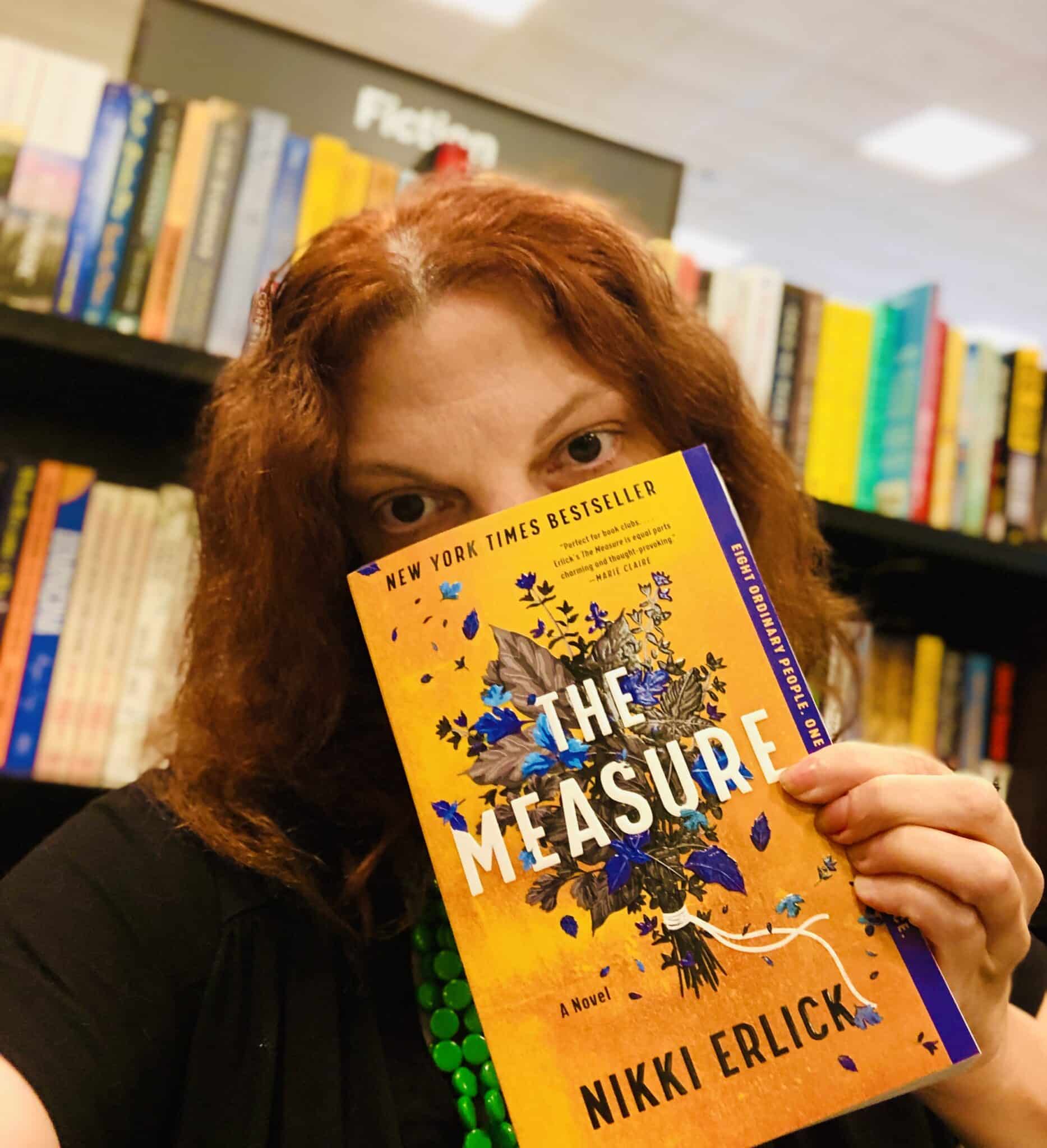
Beat the heat this Summer with a good book, show or podcast. This year, Peachtree Corners Magazine received over 30 recommendations from more than a dozen city residents. There is something for everyone on this list, so let’s dive in.
Machine Made: Tammany Hall and the Creation of Modern American Politics
by Terry Golway
This 400-page book offers readers a comprehensive and insightful exploration of one of the most influential political machines in American history. It provides valuable lessons and perspectives on the intersection of politics, power and society.
Turning Point: The Bomb and the Cold War
Stream on Netflix
This nine-part series offers viewers a thought-provoking exploration of one of the most consequential periods in modern history. It provides deep insights into the complexities of nuclear politics and the enduring legacy of the Cold War.
Fareed Zakaria GPS
Listen on CNN Audio
This podcast comprehensively examines foreign affairs. It enhances a listener’s global awareness, fosters critical thinking and sheds light on complex issues shaping our world today.
— Brian Johnson, City Manager for Peachtree Corners

Empowering Nurses Through Self-care: Unleashing Your Potential and Thriving in the Nursing Profession
by Audrey Boyce
Audrey Boyce offers a practical guide to help nurses find balance and fulfillment in their personal lives and professions. With a comprehensive overview of self-care strategies, this book is essential for nurses looking to recharge, reduce stress and increase job satisfaction.
The Go-Giver, Expanded Edition: A Little Story About a Powerful Business Idea by Bob Burg and John David Mann
The Go-Giver tells the story of Joe, an ambitious young man striving for success. Through Joe’s journey, this book imparts powerful lessons about the significance of giving, collaboration and building meaningful relationships in achieving success.
Special Ops: Lioness
Stream on Paramount+
The protagonist, Joe, attempts to balance her personal and professional life as the tip of the CIA’s spear in the war on terror. The Lioness Program enlists Cruz to operate undercover alongside Joe among the power brokers of State terrorism.
Money and Wealth
Listen on Apple Podcasts
In Money and Wealth, John Hope Bryant provides valuable insights into financial literacy and wealth-building strategies. With a clear and accessible approach, Bryant aims to empower listeners with practical knowledge to achieve financial stability and success.
— Bobby Cobb, CEO of Cobb Global Outreach Inc.

1984
by George Orwell
The new audio drama of George Orwell’s 1984 on Audible is nothing short of phenomenal. With a full cast of film stars and sound effects in stereo, you’ll feel like you’re actually in Oceania, being watched by Big Brother.
— Jill Tew, local author of the forthcoming young adult dystopian novel The Dividing Sky
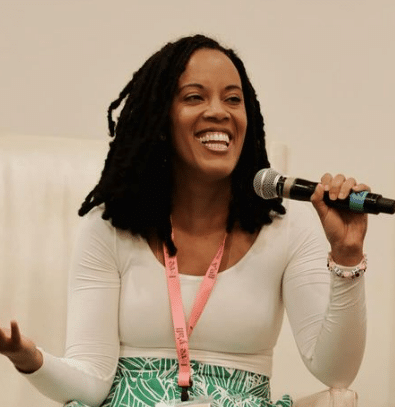
Enter Ghost
by Isabella Hammad
I recently read this and loved the writing. The author plays around with formatting between narrating the story and switching to the format of a play to show the dynamics between characters.
— Ruwa Romman, Georgia State Representative
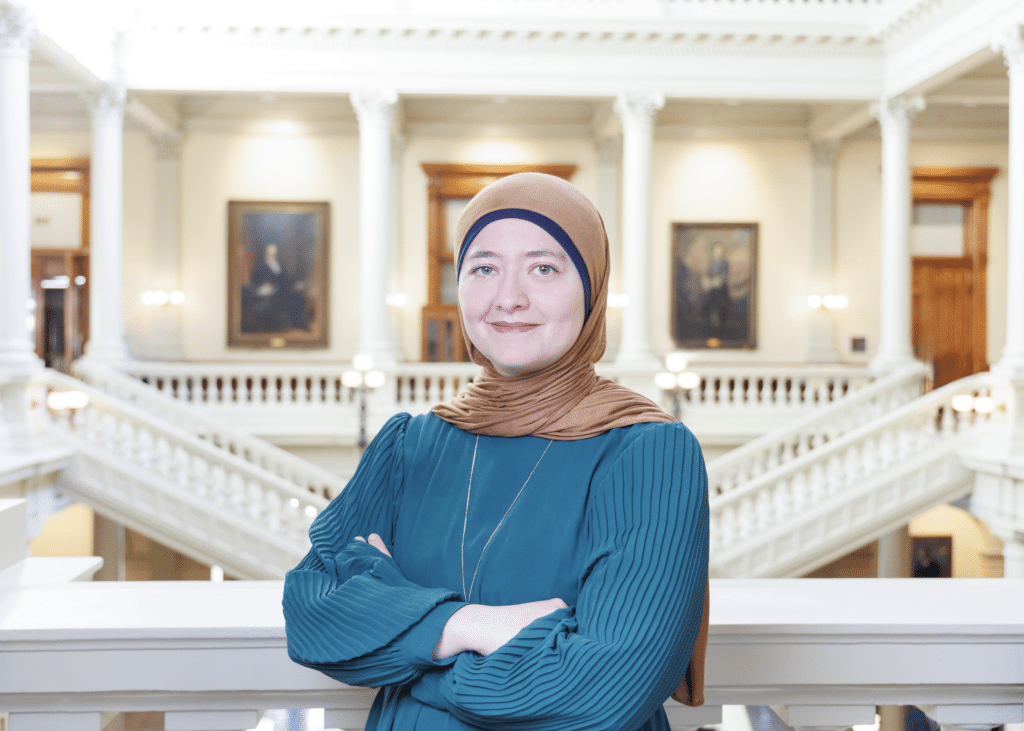
Seeing Eye Girl
by Beverly Armento
Beverly Armento’s account of her life in Seeing Eye Girl is truly remarkable. I was captivated by her story of resilience, strength and, ultimately, forgiveness.
— Erin Griffin, Norcross High School Foundation for Excellence Co-President
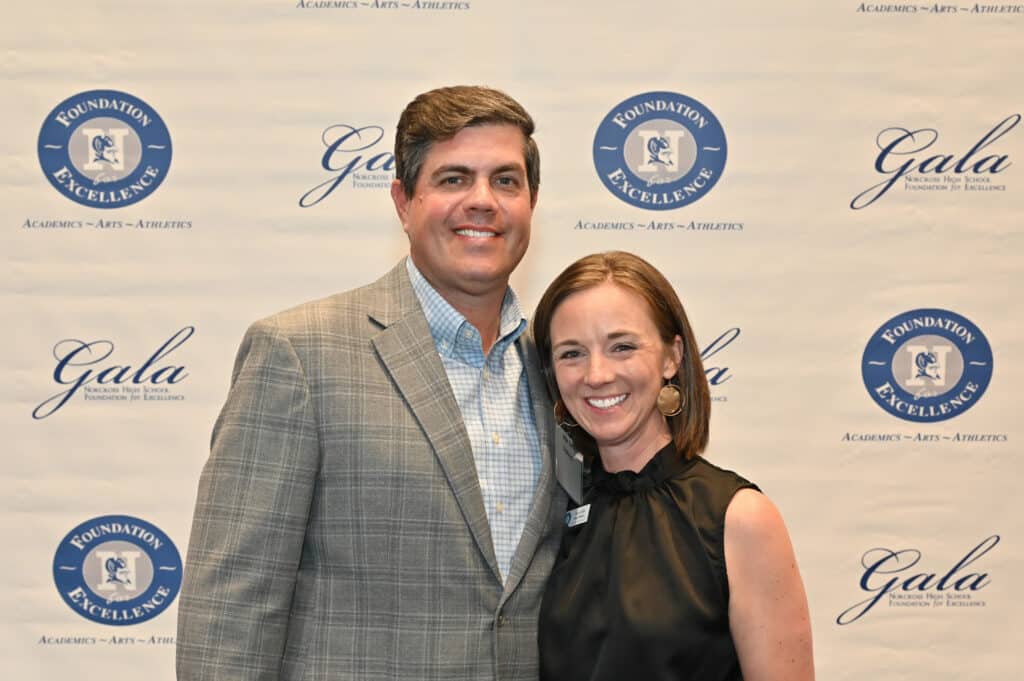
Never Enough: When Achievement Pressure Becomes Toxic – And What We Can Do About It
by Jennifer B. Wallace
This book presents research on how to raise healthy, joyful achievers in a hyper-competitive world. The author was a guest speaker at Greater Atlanta Christian’s (GAC) Parent Partnership Series this year, and we heard about the importance of children knowing that their intrinsic self-worth is not contingent solely upon external achievements.
The Anxious Generation
by Jonathan Haidt
Discover the root causes behind the epidemic of today’s teen mental illness. With compelling data, Jonathan Haidt unveils the decline of play-based childhood and offers practical solutions for a healthier, more fulfilling upbringing. We have asked GAC faculty to add this to their personal summer reading list.
— Dr. Scott Harsh, President of Greater Atlanta Christian School

Glad You’re Here
by Craig Cooper and Walker Hayes
Glad You’re Here tells the true, redemptive story of country music singer Walker Hayes and his unlikely friendship with pastor Craig Cooper. In alternating chapters, each individual shares their unique perspective on pivotal moments in their friendship, and the book reminded me to prioritize the patient and persistent cultivation of community.
— Ann Cousins, Communications Director and Wesleyan School
The Boredom Experiment
Listen on Apple Podcasts
The Boredom Experiment, hosted by Jeremy and Ashley Parsons, is a short, heartfelt podcast series that documents and explores the effect of removing digital distractions and social media from their family’s lives for a year.
Over eight episodes, they share their experiences and insights into how this experiment impacts their creativity, relationships and overall well-being. The Parson’s storytelling thoughtfully weaves together interviews, music and their musings in such a creative, personal way that makes it an absolute delight to listen to.
The 1000 Hours Outside Podcast
Listen on Apple Podcasts, Spotify and Youtube
Digital Minimalism
by Cal Newport
Digital Minimalism advocates for a thoughtful and intentional approach to technology use. Newport argues that constant connectivity and digital distractions hinder productivity and well-being and encourages individuals to choose tools and habits that align with their values and long-term goals. In a digitally crowded world, this book was a needed reminder to be intentional with my time and strategic with how I use technology.
— Natalie Dettman, Creative Director at Wesleyan School
Sideline C.E.O.
by Marty Smith
While on this surface this book offers great wisdom from some of the most successful coaches of our time, it also provides a behind-the-scenes look at the lives of many people we admire.
From learning about Greg Sankey figuring out how to lead the SEC through Covid as he sat on his front porch to Mack Brown processing through how to lead his football team through racial tensions at UNC, you realize that these men [and women] are normal human beings that face the same difficult choices as the rest of us.
Not to mention, Marty Smith captures the lives and insight of these coaches in a fun, compelling way!
Practicing the Way
by John Mark Comer
New Kid
by Jerry Craft
Where Do We Go from Here
by Martin Luther King Jr.
— Joseph Antonio, Middle School Principal at Wesleyan School
West with Giraffes
by Linda Rutledge
This is lightly based on a true story. It is the story of moving giraffes who survived a hurricane, were rescued in the Atlantic, and were carried cross-country to the San Diego Zoo. It is well-written, and the character development is fantastic.
Crossing the country with two giraffes during the Depression created excitement in all the small struggling areas. The joy of those who had never dreamed of seeing a giraffe in real life will bring joy to anyone reading this book.
Housewives of True Crime
Listen on Apple Podcasts and Youtube
Moms and Mysteries
Listen on Apple Podcasts, iHeart Radio and Spotify
Southern Fried Crime
Listen on Apple Podcasts and Youtube
Wiser than Me with Julia Louis-Dreyfus
Listen wherever you get your podcasts
— Nancy Minor, The Nancy Minor Team
The Women
by Kristen Hannah.
A great read about the Army nurses in Vietnam.
— Laurie Rogers, The Nancy Minor Team
In The Woods
by Tana French
This book is a real page-turner. The author is a gifted writer, so even though it is a crime thriller, it reads like a novel. There are six books in the series, and I have read all of them.
Casefiles
Listen on Apple Podcasts and Spotify
This is a true crime podcast that has been around for several years. The stories are detailed and very interesting and cases are examined from all over the world.
— Shameka Allen, MBA, MA, CEO of Good Samaritan Health Centers of Gwinnett
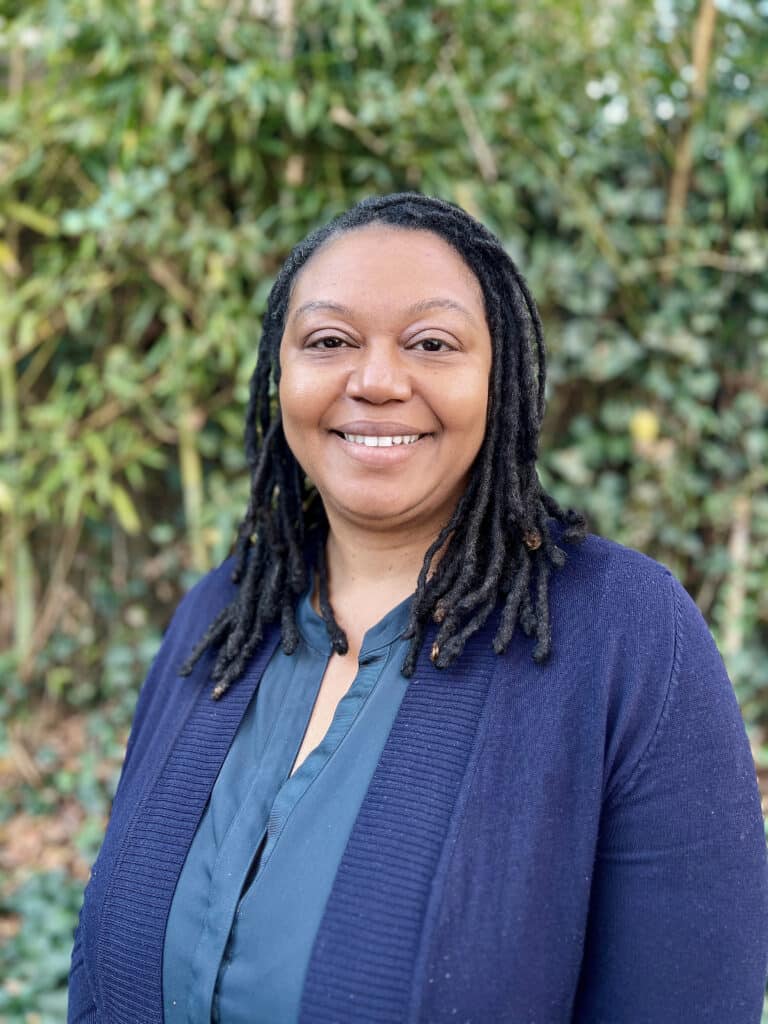
Over the Edge of the World
by Laurence Bergreen
Over the Edge of the World is a captivating account of Magellan’s expedition around the world. We all know Magellan’s name but few of us know the rich details behind the adventure and how it unfolded. I was inspired by the courage and bravery of those who took part in the great Age of Exploration.
Arrested Development
Stream on Netflix
This is easily one of our favorite shows. My wife, Meredith, and I have watched and re-watched it so many times and still find it so hilariously funny. The show blends clever writing with quirky characters and intricate, running gags. There’s always money in the Banana Stand!
Dr. Death
Listen on Apple Podcasts, Spotify and Wondery
This gripping true-crime podcast explores the shocking story of a dangerous surgeon. It’s a must-listen for its compelling narrative, deep investigative journalism and critical insights into medical malpractice and systemic failures. The podcast has since been made into a limited streaming TV series.
— Scott Hilton, Georgia State Representative

Sleep Wrecked Kids
by Sharon Moore
This book explains how inadequate sleep affects children’s growth, development and learning. This is a great guide to creating better sleep routines.
Healthy Sleep Happy Kid
by Meghna Dassani
This quick, easy read offers valuable insights into how sleep impacts a child’s health. It provides practical tips for improving your child’s sleep environment and habits and is a go-to resource for parents aiming to enhance their child’s sleep and overall wellness.
I can’t overstate the importance of good sleep habits for the overall well-being of your child and the entire household. Quality sleep is the foundation for happy, healthy kids and stress-free parents, setting the stage for the best possible summer with your family.
— Dr. Gia Grannum, Board Certified Pediatric Dentist of Agape Pediatric Dentistry

The Measure
by Nikki Erlick
I recommend The Measure by Nikki Erlick, which is about to come out in paperback! It’s a great pick for summer reading or a book club!
Poured Over, the Barnes & Noble Podcast
Stream on the Barnes & Noble website and Apple Podcasts
Check out the Poured Over podcast for interviews with your favorite authors, book recommendations for your TBR pile and more.
— Amanda Couch, Assistant Manager at Barnes & Noble at The Forum
Want even more recommendations? Check out last year’s list here.
Related
Read the Digital Edition
Subscribe
Keep Up With Peachtree Corners News
Join our mailing list to receive the latest news and updates from our team.
You have Successfully Subscribed!

What’s going on at Jones Bridge Park and the Challenges of Urban Development

Taste of Peachtree Corners: PCBA Showcases Local Restaurants

The Forum Gives Sneak Peek of New Eateries and Community Spaces

Southwest Gwinnett Mayors Share Visions for the Future

8 Events Happening In and Around Peachtree Corners This August

Peachtree Corners Shines Bright with Light Up the Corners Glow Race this August

Peachtree Corners Shines Bright with Light Up the Corners Glow Race this August

The Forum Gives Sneak Peek of New Eateries and Community Spaces

8 Events Happening In and Around Peachtree Corners This August

Southwest Gwinnett Mayors Share Visions for the Future

Taste of Peachtree Corners: PCBA Showcases Local Restaurants

What’s going on at Jones Bridge Park and the Challenges of Urban Development

Local Resident Opens AtWork Location in Peachtree Corners

CHRIS 180 Expands its Services into Gwinnett County [Podcast]

Light up the Corners [Video]

Capitalist Sage: Business Leadership in Your Community [Podcast]

Cliff Bramble: A Culinary Adventure through Italy

Top 10 Brunch Places in Gwinnett County

A Hunger for Hospitality

THE CORNERS EPISODE 3 – BLAXICAN PART 1

Top 10 Indoor Things To Do This Winter

The ED Hour: What it takes to Remove Barriers from Education
Peachtree Corners Life
Topics and Categories
Trending
-
Business1 week ago
Taste of Peachtree Corners: PCBA Showcases Local Restaurants
-
Business2 days ago
The Forum Gives Sneak Peek of New Eateries and Community Spaces
-
City Government4 days ago
Southwest Gwinnett Mayors Share Visions for the Future
-
Around Atlanta4 days ago
8 Events Happening In and Around Peachtree Corners This August



